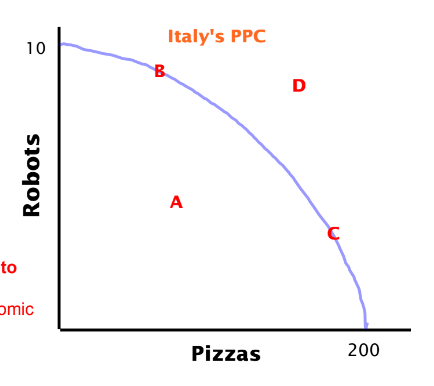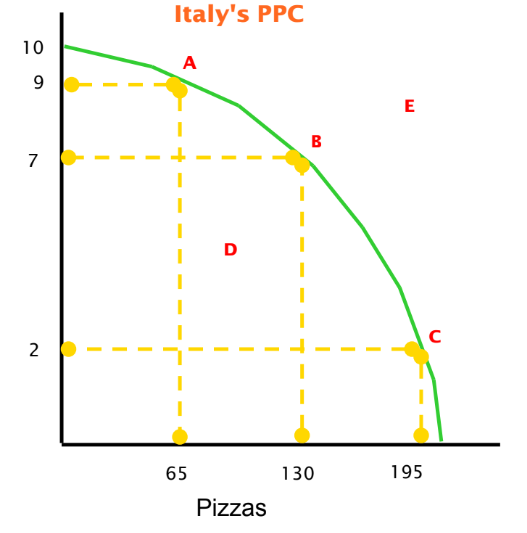
Social Studies Economics
The Economic Problem - study of how societies use scarce resources needed to produce goods and services to fulfil unlimited needs and wants of the population and distribute these goods and services among different groups.
Key concepts:
Scarcity - limited availability of economic resources relative to soceity’s unlimited demand for goods and services.
Choice - Not all needs and wants can be fulfilled, so that leads to choice, which gives rise to opportunity cost. Economics studies the consequences of choices
Equity - concept of idea of fairness, where everyone get’s what they need, not the same.
Economic well-being - multidimensional concept that relates to level of prosperity and quality of living standards. Includes: present and future financial security, meeting basic needs, ability to make economic choices that increases personal satisfaction, maintaiing stable wage over long term
Sustainability - ability of the present generation to meet it’s needs without decreasing the ability of the future generation. Limiting degree of the current generation economic activites in order to benefit the environment.
Three Basic Economic Questions
What to produce?
How to produce?
For whom to produce?
Using the Three Basic Questions to Free Market Economy and Centrally Planned Econom
Free market economy
What to produce?
Consumer sovereignty determines the market.
High prices signal demand.
Firms produce to maximize profit.
How to produce?
Profit motive and consumer preferences allocate resources.
Efficiency is crucial for competitiveness.
For whom to produce?
Consumers who can pay consume goods.
Advantages:
Constant competition leads to more innovation
Firms have a hand in their economic well-being by being able to change how they use resources.
Disadvantages
Companies can completely dominate their market (monopoly), decreasing equity for smaller businesses. Income inequality where rich is getting richer and poor is getting poorer.
No economic well-being of workers, who can be fired at a moment’s notice and exploited.
What to produce?
Government decides based on societal needs.
How to produce?
Government controls resource allocation and work placement.
For whom to produce?
Government controls production, distribution
Everyone works for the government and are paid the a similar salary.
Advantages:
Scarcity is controlled prevents everyone grabbing at a resource until it’s completely gone. Creates sustainability
The economic well-being of lower class is looked after with government intervention making regulations on wages and wages being the same. Less income inequality.
Disadvantage:
Not efficient. Government making a wrong choice can lead to workers having no choice but to follow through with their financial demise.
Everyone getting paid a similar salary leads to everyone not doing work, leading to unsustainability and inefficiency.
Free market economy:
Private ownership of resources.
Decisions made by consumers and producers through the price mechanism.
Centrally planned economy:
Economic decions made by the government
Production Probabilities Curve
Opportunity cost: The cost of the next best alternative foregone.
Ex. You study late at night and the next day you feel sleepy. The opportunity cost is a good night’s sleep.

Production Possibility Curve (PPC) / Production Probability Frontier (PPF)
Diagrammatic representation of an economy that illustrates the possible cominations of goods or sevices that can be produced by a nation if resources are used efficiently. Capital goods vs consumer goods
it shows that nothing is free and that everything has an opportunity cost. Ex, If Italy wants to produce 200 pizzas, it can’t produce any robots.
Any point inside the curve - resources not used efficiently. Any point beyond curve - impossible to achieve
Assumptions of PPC Model
The nation’s resources are fixed in quantity
The nation must only pick between the two goods
The economy is closed (no trade)
Represents only one country’s economy
Technology remains constant
There is a limit to production
Any production less than the limit leaves unused resouces
Any point inside the curve suggests unemployment
The limit (curve) shifts outwards when there improvement in quality/quantity of factors of production
Improvements in resources
Technological advancements
Dsicovery of resources
Building new factories
Population increase
New policies
Trade
Price shifts (de-inflation)
Working age decreases
Immigration
Foreign knowledge / gain of knowledge in general

Questions
What points are attianble and desirable? Why
A and C. Attainble through full employment, efficient use of all resources.
What points are attainable, but not desirable? Why
D - inefficent use of resouces, unemployed resources.
What points ae unattainable? Desirable?
E is unattaimable. Desirable because you can make a lot of both products.
Which point means mre consumption in the future? Why?
A- robots are a capital good that makes other products for consumption. If more robots are produced now, more consumer goods in the future.
Which one means more consumption? Why?
C- pizza is a consumer good. Households don’t buy and use robots, but they consume pizza.
Why is it bowed outwards?
The Law of Increasing Opportunity Cost - As you increase the production of one good, the opportunity cost to produce the additional good will increase.
The 4 Factors of Production
Land
Natural resources on the planet to make goods.
Ex. Electricity, water
Labout
Physical effort that makes goods
Ex. Employees, animals that help complete labour
Capital
Human-made resources that makes goods. Separated into phyiscal (human made), and human (knowledge and skill).
Ex. Physcial - machines. Human- carpentry skills
Entrepreneurship
Launching and running a business.
Ex. Managing factories
Transaction and Trade
Trade - exchaning a thing for another.
Essentailly, buying is trading. The action fo trading is called a transaction, which has two or more people: the consumer, the dealer, and the producer. Sometimes, there are several middlemen, which help the producer distribute their products.
Ex. For example, an author writes a book, which is then published by an agent, sold in a bookstore, then bought by a reader.
Governments sometimes try to control which goods go in (imports) and which goods go out (exports) through:
Tariffs - taxes on imports. This causes the price of locally produced products to be cheaper and more popular.
Quota - limit of export/import
Economists believe that no trade barriers (free trade) is more beneficial to the country’s economy.
The Economic Problem - study of how societies use scarce resources needed to produce goods and services to fulfil unlimited needs and wants of the population and distribute these goods and services among different groups.
Key concepts:
Scarcity - limited availability of economic resources relative to soceity’s unlimited demand for goods and services.
Choice - Not all needs and wants can be fulfilled, so that leads to choice, which gives rise to opportunity cost. Economics studies the consequences of choices
Equity - concept of idea of fairness, where everyone get’s what they need, not the same.
Economic well-being - multidimensional concept that relates to level of prosperity and quality of living standards. Includes: present and future financial security, meeting basic needs, ability to make economic choices that increases personal satisfaction, maintaiing stable wage over long term
Sustainability - ability of the present generation to meet it’s needs without decreasing the ability of the future generation. Limiting degree of the current generation economic activites in order to benefit the environment.
Three Basic Economic Questions
What to produce?
How to produce?
For whom to produce?
Using the Three Basic Questions to Free Market Economy and Centrally Planned Econom
Free market economy
What to produce?
Consumer sovereignty determines the market.
High prices signal demand.
Firms produce to maximize profit.
How to produce?
Profit motive and consumer preferences allocate resources.
Efficiency is crucial for competitiveness.
For whom to produce?
Consumers who can pay consume goods.
Advantages:
Constant competition leads to more innovation
Firms have a hand in their economic well-being by being able to change how they use resources.
Disadvantages
Companies can completely dominate their market (monopoly), decreasing equity for smaller businesses. Income inequality where rich is getting richer and poor is getting poorer.
No economic well-being of workers, who can be fired at a moment’s notice and exploited.
What to produce?
Government decides based on societal needs.
How to produce?
Government controls resource allocation and work placement.
For whom to produce?
Government controls production, distribution
Everyone works for the government and are paid the a similar salary.
Advantages:
Scarcity is controlled prevents everyone grabbing at a resource until it’s completely gone. Creates sustainability
The economic well-being of lower class is looked after with government intervention making regulations on wages and wages being the same. Less income inequality.
Disadvantage:
Not efficient. Government making a wrong choice can lead to workers having no choice but to follow through with their financial demise.
Everyone getting paid a similar salary leads to everyone not doing work, leading to unsustainability and inefficiency.
Free market economy:
Private ownership of resources.
Decisions made by consumers and producers through the price mechanism.
Centrally planned economy:
Economic decions made by the government
Production Probabilities Curve
Opportunity cost: The cost of the next best alternative foregone.
Ex. You study late at night and the next day you feel sleepy. The opportunity cost is a good night’s sleep.

Production Possibility Curve (PPC) / Production Probability Frontier (PPF)
Diagrammatic representation of an economy that illustrates the possible cominations of goods or sevices that can be produced by a nation if resources are used efficiently. Capital goods vs consumer goods
it shows that nothing is free and that everything has an opportunity cost. Ex, If Italy wants to produce 200 pizzas, it can’t produce any robots.
Any point inside the curve - resources not used efficiently. Any point beyond curve - impossible to achieve
Assumptions of PPC Model
The nation’s resources are fixed in quantity
The nation must only pick between the two goods
The economy is closed (no trade)
Represents only one country’s economy
Technology remains constant
There is a limit to production
Any production less than the limit leaves unused resouces
Any point inside the curve suggests unemployment
The limit (curve) shifts outwards when there improvement in quality/quantity of factors of production
Improvements in resources
Technological advancements
Dsicovery of resources
Building new factories
Population increase
New policies
Trade
Price shifts (de-inflation)
Working age decreases
Immigration
Foreign knowledge / gain of knowledge in general

Questions
What points are attianble and desirable? Why
A and C. Attainble through full employment, efficient use of all resources.
What points are attainable, but not desirable? Why
D - inefficent use of resouces, unemployed resources.
What points ae unattainable? Desirable?
E is unattaimable. Desirable because you can make a lot of both products.
Which point means mre consumption in the future? Why?
A- robots are a capital good that makes other products for consumption. If more robots are produced now, more consumer goods in the future.
Which one means more consumption? Why?
C- pizza is a consumer good. Households don’t buy and use robots, but they consume pizza.
Why is it bowed outwards?
The Law of Increasing Opportunity Cost - As you increase the production of one good, the opportunity cost to produce the additional good will increase.
The 4 Factors of Production
Land
Natural resources on the planet to make goods.
Ex. Electricity, water
Labout
Physical effort that makes goods
Ex. Employees, animals that help complete labour
Capital
Human-made resources that makes goods. Separated into phyiscal (human made), and human (knowledge and skill).
Ex. Physcial - machines. Human- carpentry skills
Entrepreneurship
Launching and running a business.
Ex. Managing factories
Transaction and Trade
Trade - exchaning a thing for another.
Essentailly, buying is trading. The action fo trading is called a transaction, which has two or more people: the consumer, the dealer, and the producer. Sometimes, there are several middlemen, which help the producer distribute their products.
Ex. For example, an author writes a book, which is then published by an agent, sold in a bookstore, then bought by a reader.
Governments sometimes try to control which goods go in (imports) and which goods go out (exports) through:
Tariffs - taxes on imports. This causes the price of locally produced products to be cheaper and more popular.
Quota - limit of export/import
Economists believe that no trade barriers (free trade) is more beneficial to the country’s economy.